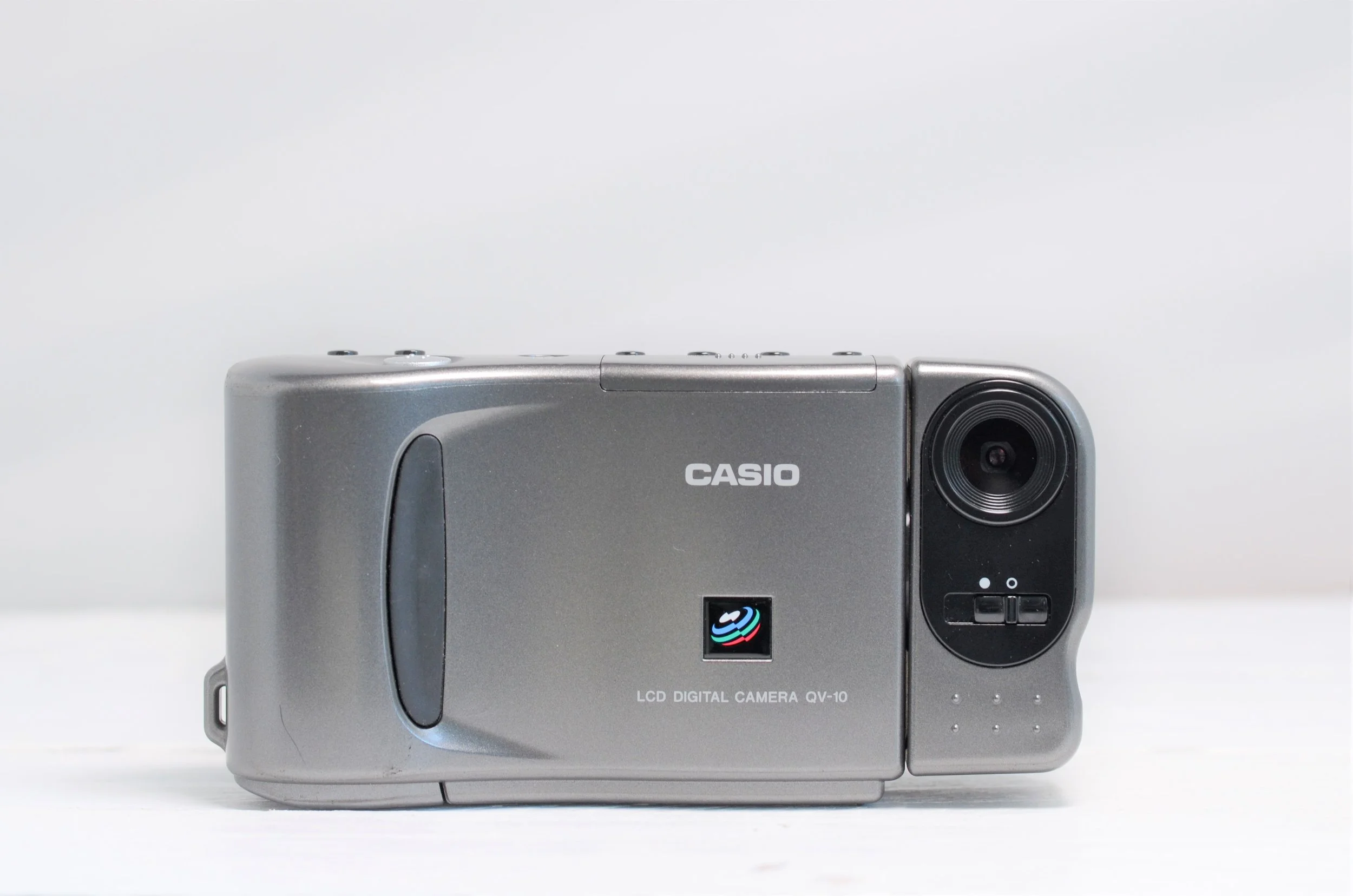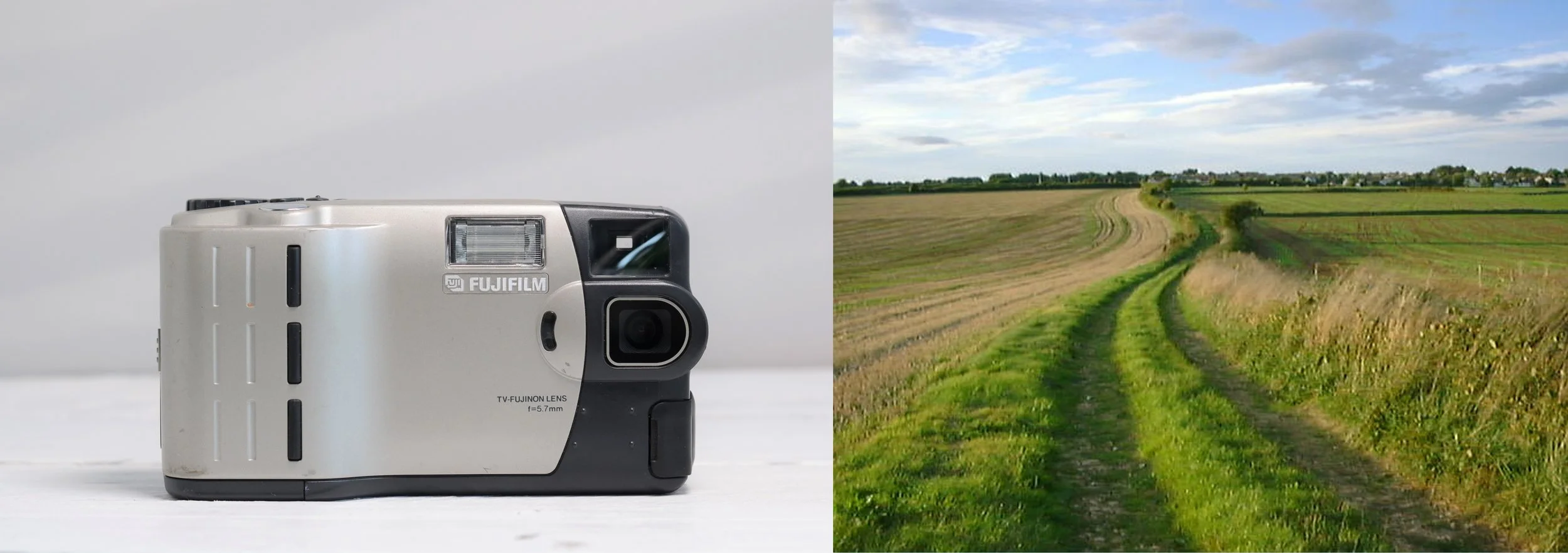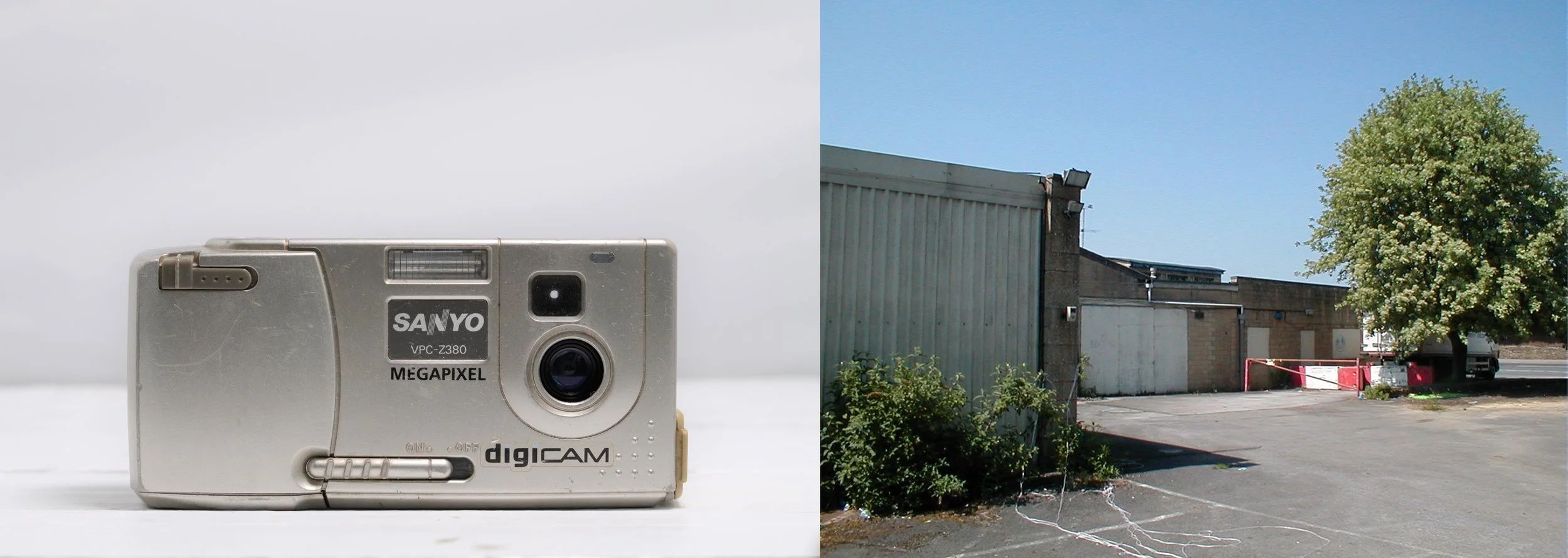Early digital…
I may be a philistine in the eyes of some analogue shooters, but there is a lot to be said for the early years of digital cameras. Yes, the images were shockingly bad when compared to film, but the low resolution pixely goodness you get from those tiny sensors can be quite fun.
When I say early digital, I am talking about cameras produced from the advent of the era in the mid Nineties up to the early Two Thousands, until the sensor size rose above 3MP and the images became too clean.
As with analogue cameras, there are a multitude of vanilla compacts, but some designs (especially early ones) tried to break the mould and look futuristic to encourage consumers away from tried and tested film.
Epson PhotoPC 750Z (1998 1.25MP)
The 1.2MP Epson PhotoPC 750Z’s design still keeps the traditional compact form factor, but just feels more stylish than the Canon Sureshot type cameras also from 1998. The images however could never match 35mm film for quality.
There were cameras known brands like Canon and Sony plus obscure ones that no longer exist and brands that are now associated with other products like Casio for their watches and calculators, but dabbled in cameras back in the day.
Whilst some manufacturers stuck to traditional styling others opted to throw the rulebook away and let the designers to wild. Casio’s QV range had a swivel lens and sleek body, starting in 1994 with the 0.25MP QV-10 and progressively getting more sculpted through to the QV-8000SX from 1999. Fujifilm also had some interesting ideas with vertical standing designs - my personal favourite the M603 that looks like it is straight out of Star Wars!
Fujifilm Finepix M603 (2002 / 3MP)
Casio QV-10 (1994 / 0.25MP)
And here is the first issue when it comes to shooting with some of these digital relics… Not all manufactures stuck to using the most popular Memory Card solutions for storage. For example the early Casio QV’s had internal storage only, which needs a computer and software from the same era to transfer images. Others chose to use cards that you cannot get readers for these days like the Relisys Dimera 3500 that uses Serial Flash Module cards!
Relisys Dimera 3500 (1999 / 0.3MP)
Some models however did use standard cards like SmartMedia or CompactFlash in conjunction with ‘normal’ batteries (AA) so they can easily be used nowadays. This is where the fun is!
There are some really cool designs, that you can actually use and produce (in good light) some really cool looking images.
Fujifilm DX-7 (1997 / 0.35MP)
Ricoh RDC4200 (1998 / 1.3MP)
Sanyo VPC-Z380 (1999 / 1.3MP)
Kodak was a main player in the digital revolution, as they were in film a century before. The company’s 1989 1.3MP prototype D-5000 used the body and lens of a Chinon CP-9AF which is a very capable 35mm SLR in it’s own right, then developing digital add-ons for Canon and Nikon’s pro SLR’s. It wasn’t until 1994 they released their first consumer camera - the DC-40, and went on to make some rather fun models such as DC215 and my latest purchase the DC4800 (surely a future cult classic from the year 2000 with a whopping 3.1MP sensor. It still retains the gritty charm of the early stuff, but has very advanced features for a compact such as manual exposure and exposure compensation. I have just shot a CompactFlash card of images, and really like using it…
Kodak DC4800
Kodak DC4800 (2000 / 3.1MP)
Kodak DC4800 (2000 / 3.1MP)
The sweet spot for these cameras is 1.3-3.1MP, and it is well worth dipping your toes in before market values shoot up when the Millennials re-visit their youth and it becomes really trendy.









